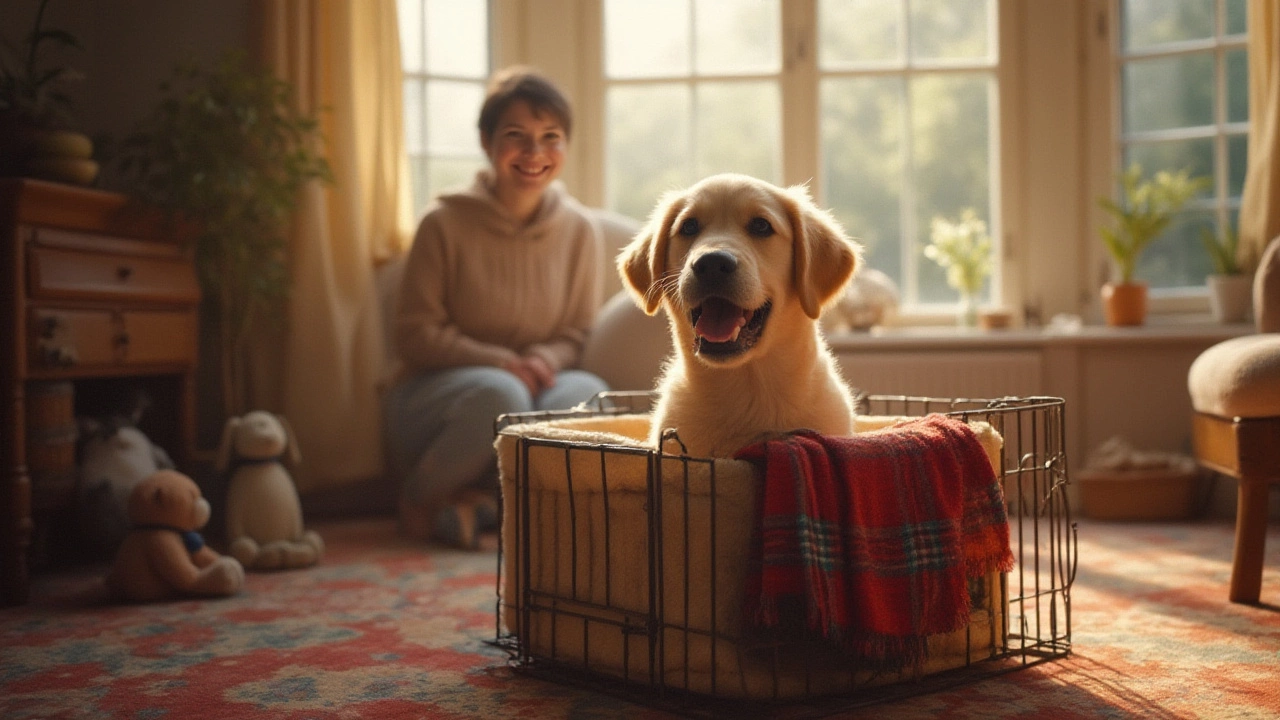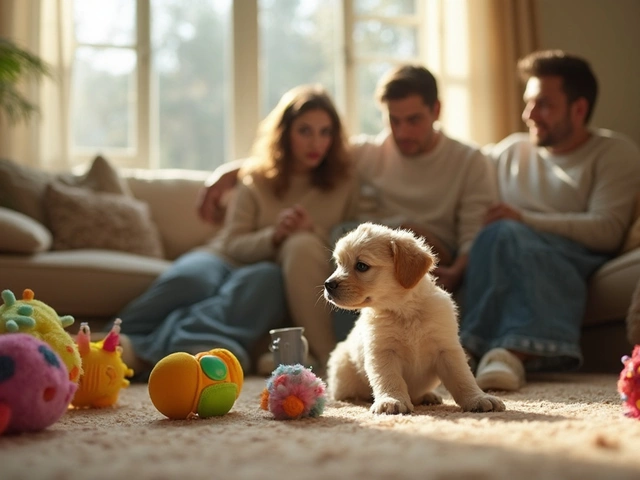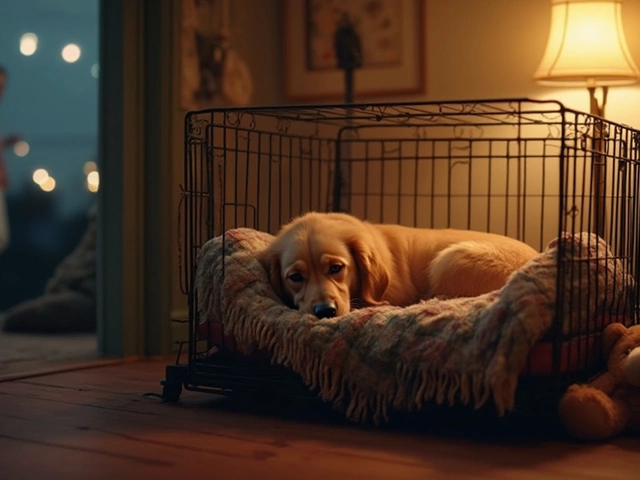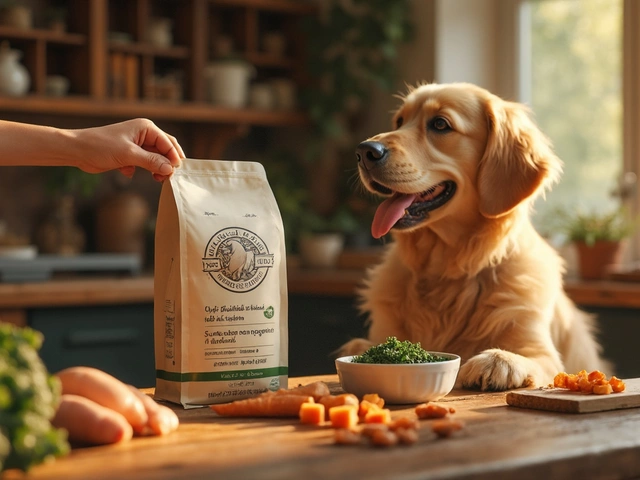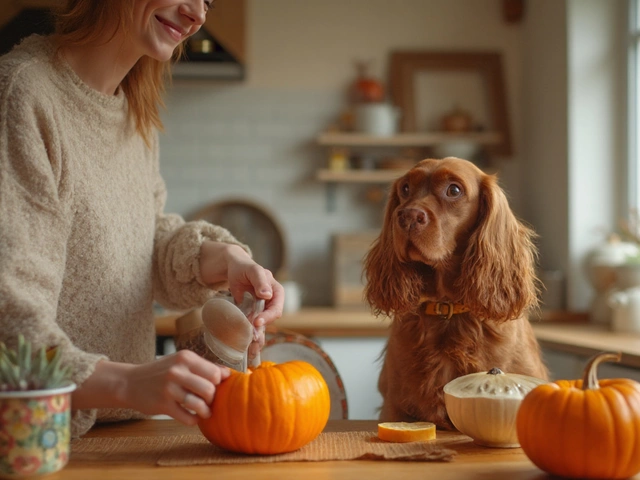Imagine dropping your pup into their crate with just cold plastic underneath. That doesn't sound right, does it? Dogs, just like us, crave comfort and security, but not every soft thing we throw in a crate is the smart choice. People have strong opinions about crate bedding, often sparked by cute Instagram posts or, let's be honest, a few too many chewed-up blankets. Let's strip away the noise and see what actually works to make your dog's crate both cozy and safe.
Why Do Dogs Need Bedding in Their Crate?
Think about how you feel curling up on a chilly floor with nothing but hardwood for company. It's uncomfortable, right? Dogs get it too. Their crate is meant to be a safe den—a private spot where they can relax, nap, and destress. Unlike the old myth that dogs just love to sleep on bare floors, research from the American Kennel Club shows most dogs actually prefer a little cushioning. A crate with no bedding becomes a cold and clinical place, which makes it less inviting and more stressful.
Puppies especially benefit from bedding. Their joints are still forming, so a soft surface supports healthy growth. Senior dogs need it just as much for achy muscles and arthritis. Plus, some dogs with anxiety see soft items as a source of comfort, something familiar that makes the crate feel more like home than timeout. According to animal behaviorist Dr. Katy Nelson, “Providing comfortable bedding shows your dog this is their space where they’re safe and cared for.” That’s true whether it's a snuggly blanket, a dog bed, or a plush crate mat.
Yet, dogs aren’t just furry lumps napping all day. They spend hours in their crate while you're at work or sleeping, so anything you put there should help them stay comfortable and healthy for long stretches. No blanket—or lack of one—should interfere with that.
The Pros and Cons of Blankets for Crate Bedding
A blanket seems like the obvious solution. Soft, washable, easy to swap out, and something you probably already own. Not so fast—blankets in crates divide the experts. Let's look at both sides.
Dog comfort usually spikes with bedding, and a blanket does the trick for most healthy adults or gentle snoozers. Blankets help trap heat in winter and can even be layered if you need extra cushioning. For lots of pups, a favorite blanket also smells like you or their home, making them less anxious during storms or fireworks. In practical terms, a blanket is cheaper than custom dog beds, easier to wash when there's a mess, and replaceable if it gets shredded. That's a big plus for anyone with a young or destructive chewer.
But here’s the risky part: some dogs love sinking their teeth into fabric. Puppies in the teething stage, power chewers, and dogs with separation anxiety might shred and eat bedding. Swallowed threads and fabric can lead to dangerous intestinal blockages, a scary and expensive vet emergency. Even non-toxic fleece or cotton is risky if eaten in quantity. Some rescue groups and trainers, like those at the ASPCA, recommend waiting until your dog is past that phase or only using chew-proof mats.
Blankets also hold onto moisture, so a dog that drools, has accidents, or tips their water bowl could be resting in a damp mess. Wet bedding is a quick way to irritate skin or invite bacteria, especially for dogs with thin fur or allergies. Not all crates have the airflow to dry things quickly, and that stinks—literally and figuratively.
On rare occasions, some dogs actually prefer a cool, hard surface. For thick-coated breeds like Malamutes or Huskies, blankets might make them uncomfortably hot. Always watch your own dog’s behavior. If they shove the blanket aside to sprawl on bare plastic, respect their preference. A Cornell College of Veterinary Medicine survey found that Arctic breeds were six times more likely to opt for cool crate floors than bedding, even in cold climates.
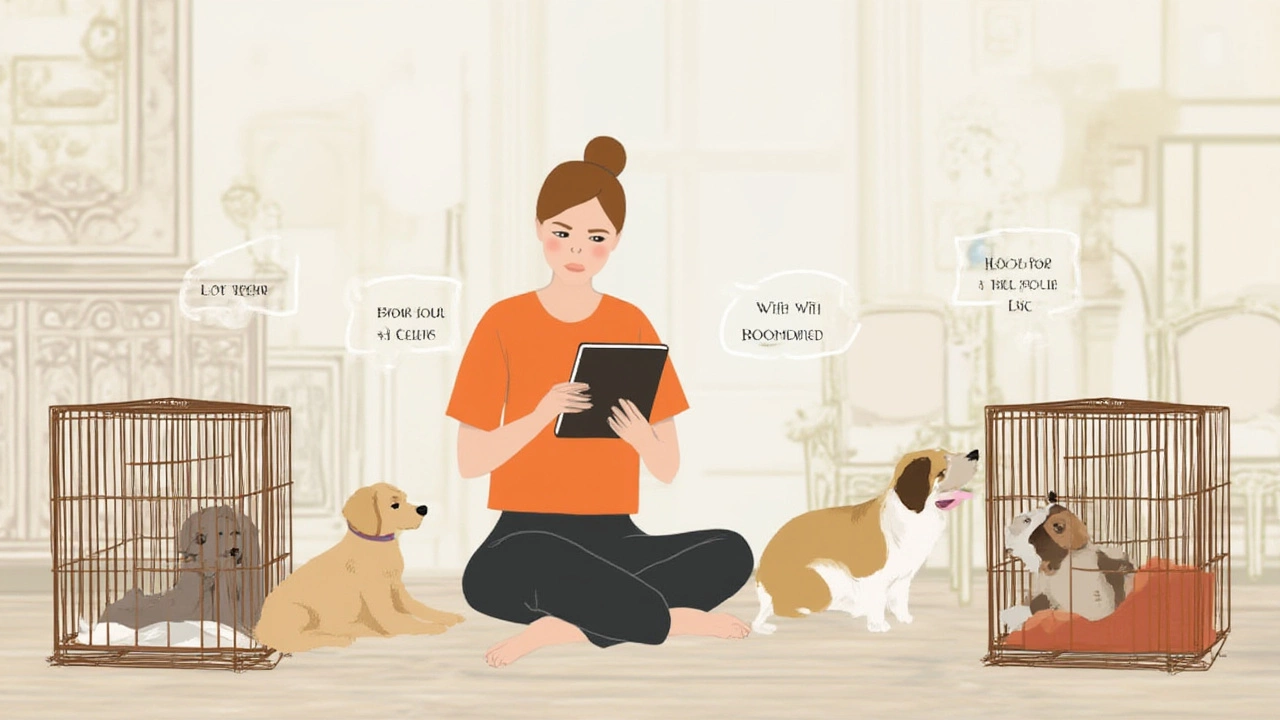
How to Choose the Right Blanket or Bedding
Ready to try a blanket in your dog's crate? It’s not just a case of tossing in whatever old throw you have lying around. Material, size, and safety all matter. Start with the right fabric—a sturdy fleece or soft cotton that's free of zippers, tassels, or buttons. Skip anything with filling that can be ripped out, like duvets or human comforters. If your dog has allergies, choose hypoallergenic options or natural fibers and avoid wool or scented detergents.
Size matters too. There’s no point in folding a queen-size blanket into a small crate. You want something that covers the floor but doesn’t bunch up into hazardous lumps or block the crate’s airflow. For extra comfort, some people layer a blanket over a chew-resistant crate mat or orthopedic dog bed. That way, if the blanket ends up bunched up in a corner, the mat covers your bases.
- Check for fraying or little holes, because those become big damage markers fast.
- Wash bedding regularly—weekly if your pup drools, sheds a lot, or spends most of the day in the crate.
- Monitor for chewing. The first few days, set up a pet cam or sneak glances to see how your dog treats their new blanket.
- Always have a spare, because a dog with a dirty or chewed-up blanket won’t wait for laundry day.
- For anxious dogs, try a blanket that smells like you or add an item of worn clothing—familiar scents calm some rescue dogs more than any plush toy.
If you want to go up a step, look for crate beds made just for chewers, which usually have reinforced seams and materials like ballistic nylon. These still provide comfort but are tougher to destroy. Older dogs and arthritic pups often do better with memory foam or orthopedic crate mats, which aren't exactly blankets but solve the same problem. It's about finding what keeps your dog safe and comfortable—your blanket doesn't need to look Instagram-perfect.
Common Blanket Problems and How to Solve Them
People think the biggest battle is choosing a blanket, but honestly, keeping it in one piece is harder. Dogs that chew, tear or soil their bedding are trying to tell you something, and it’s not always about the blanket itself. Puppies, bored adult dogs, and dogs with separation anxiety might rip up bedding out of frustration or stress. Stuffing the crate with chew-proof toys, puzzle feeders, or bully sticks can help occupy busy mouths and paws. Some crate fans line their dog’s space with just a towel (easier to replace than a fluffy blanket), but even these can vanish quickly if your dog’s a determined chewer.
Persistent wetness from accidents or drool? Try waterproof liners under the blanket. These are thin, easy to clean, and keep messes from soaking through to your crate floor. You can find reusable or disposable pee pads that fit standard crate sizes, and they’re a game-changer for housebreaking puppies or giving seniors a dry spot. If your dog is allergic or sensitive to laundry products, switch to unscented detergent and skip fabric softeners. Skin irritation from bedding seems like a weird issue, but it’s more common than you’d think, especially with scented and heavily dyed blankets.
Some dogs just won’t leave their bedding alone. If you’ve tried a few blankets, rotated toys, and even changed crate locations with no luck, consult your vet or an animal behaviorist. They can help identify anxiety triggers or medical issues you might be missing. For truly hardcore chewers, you may have to stick with a bare crate floor and just ramp up supervised playtime when they’re out. No product is worth risking your dog’s health, so err on the side of caution.
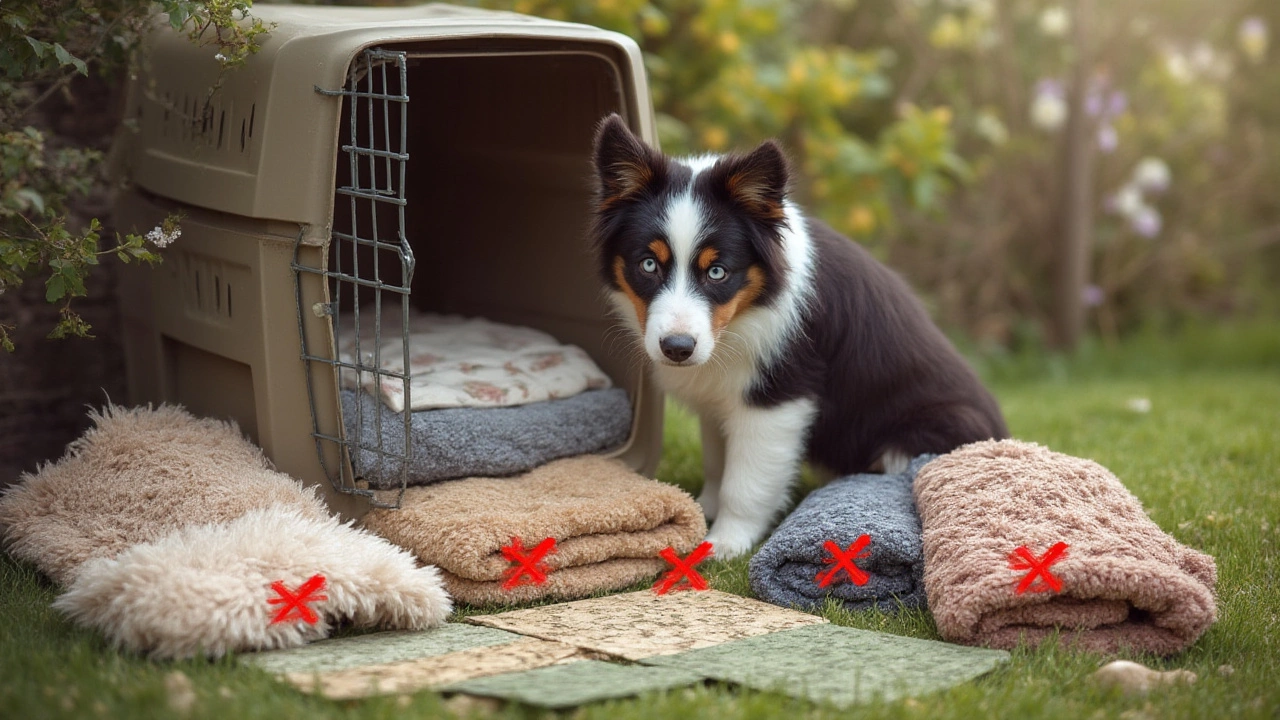
Expert Tips, Safety Stats, and What the Pros Say
The difference between a perfect crate setup and a big mess comes down to what works for your specific dog. Still, certain patterns show up among the experts. Here’s a quick cheat sheet based on actual data and pro advice.
| Dog Type | Recommended Bedding | Typical Issue | Solution |
|---|---|---|---|
| Puppy | Thin fleece blanket, washable pad | Chewing, accidents | Chew toys, waterproof liner |
| Adult chewer | Chew-resistant mat, towel | Shredding, eating fabric | No bedding, supervise closely |
| Senior dog | Memory foam, soft blanket | Arthritis, leaks | Orthopedic bed, absorbent pads |
| Anxious rescue | Bedding with familiar scent | Stress, pacing | Item with owner’s scent |
| Arctic breed | Optional, thin mat | Overheating | Bare crate or minimal cover |
There’s no single right answer. The best crate bedding is the one your dog likes and doesn’t destroy. Start with something simple, and watch how your dog behaves. Adjust if you see torn blankets, evidence of chewing, or discomfort. One pro tip: try recording your dog's first few crate sessions with a pet cam. You'll catch quirks fast.
“Dogs, like people, have different preferences. Pay attention to yours—what works for one may not work for another,” says Brandon McMillan, celebrity dog trainer and author. “Comfort and safety can coexist if you’re a little flexible.”
If comfort, warmth, and safety all line up, then yes, a blanket is a great addition to your dog's crate. Just remember—it’s not about what looks pretty, it’s about what makes your dog feel at home.

